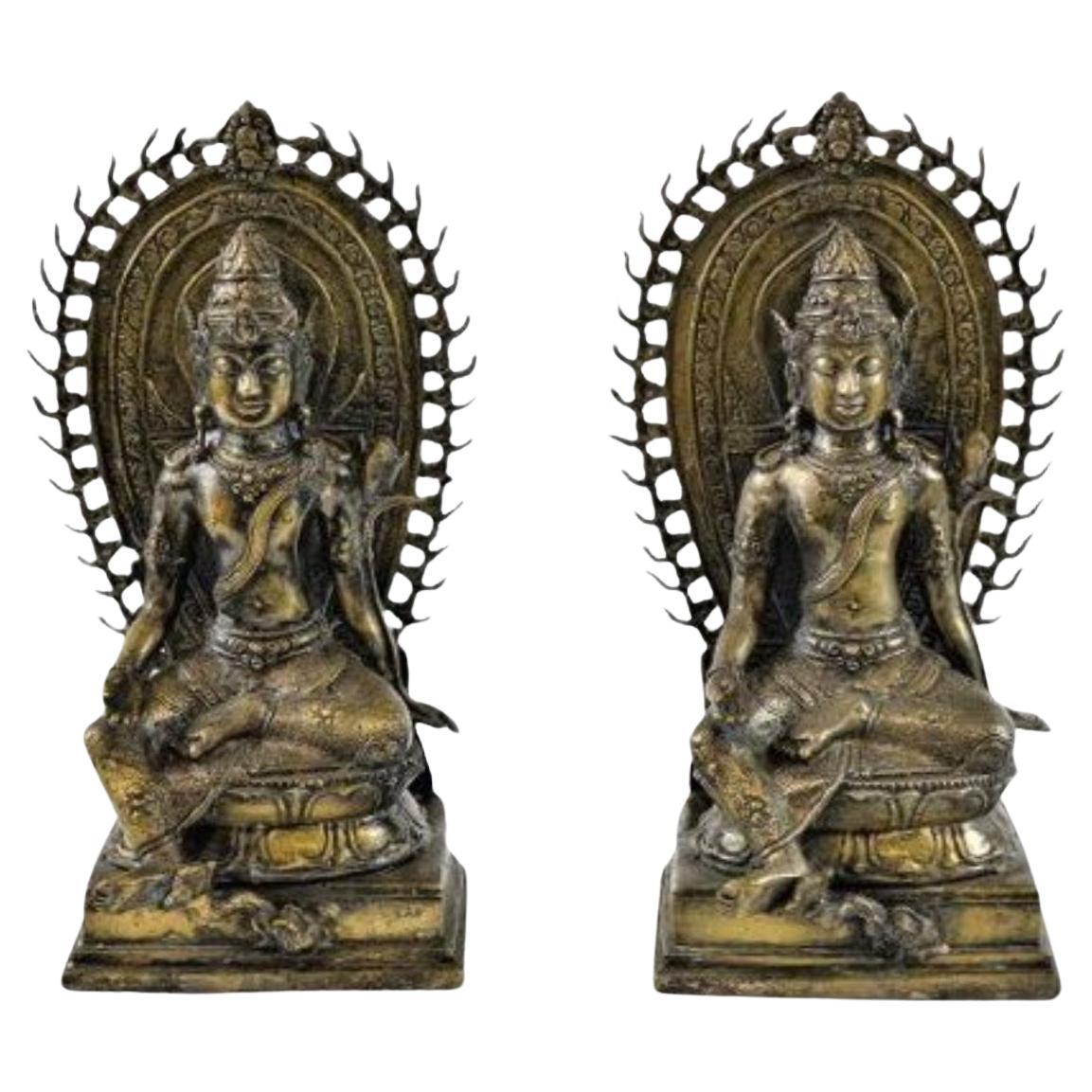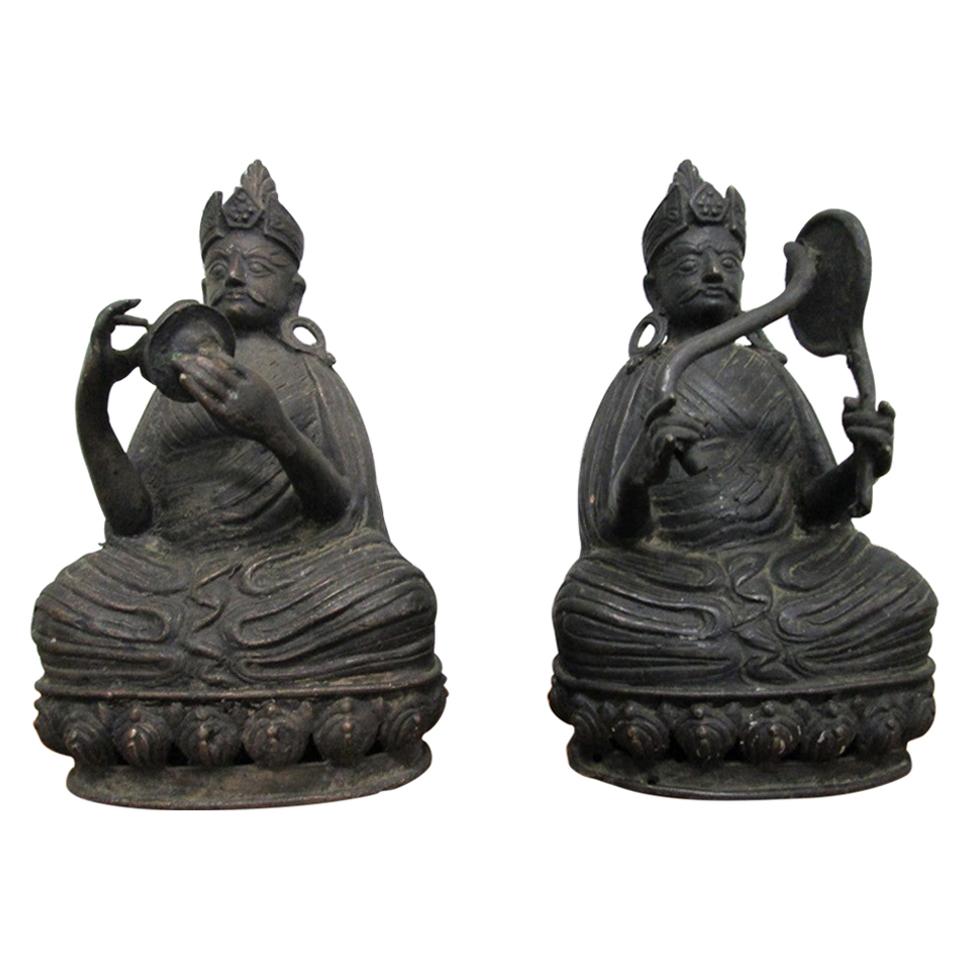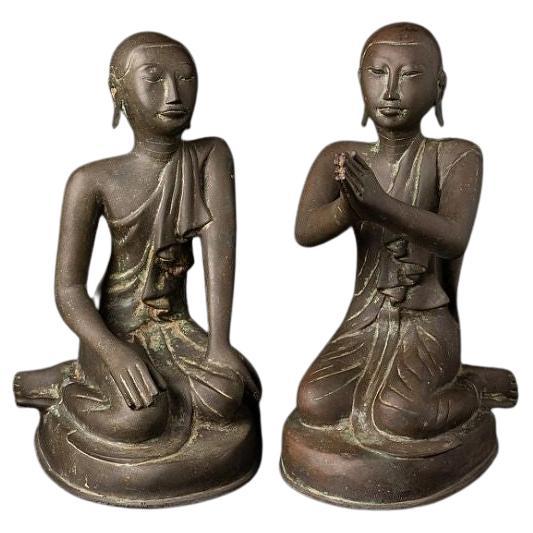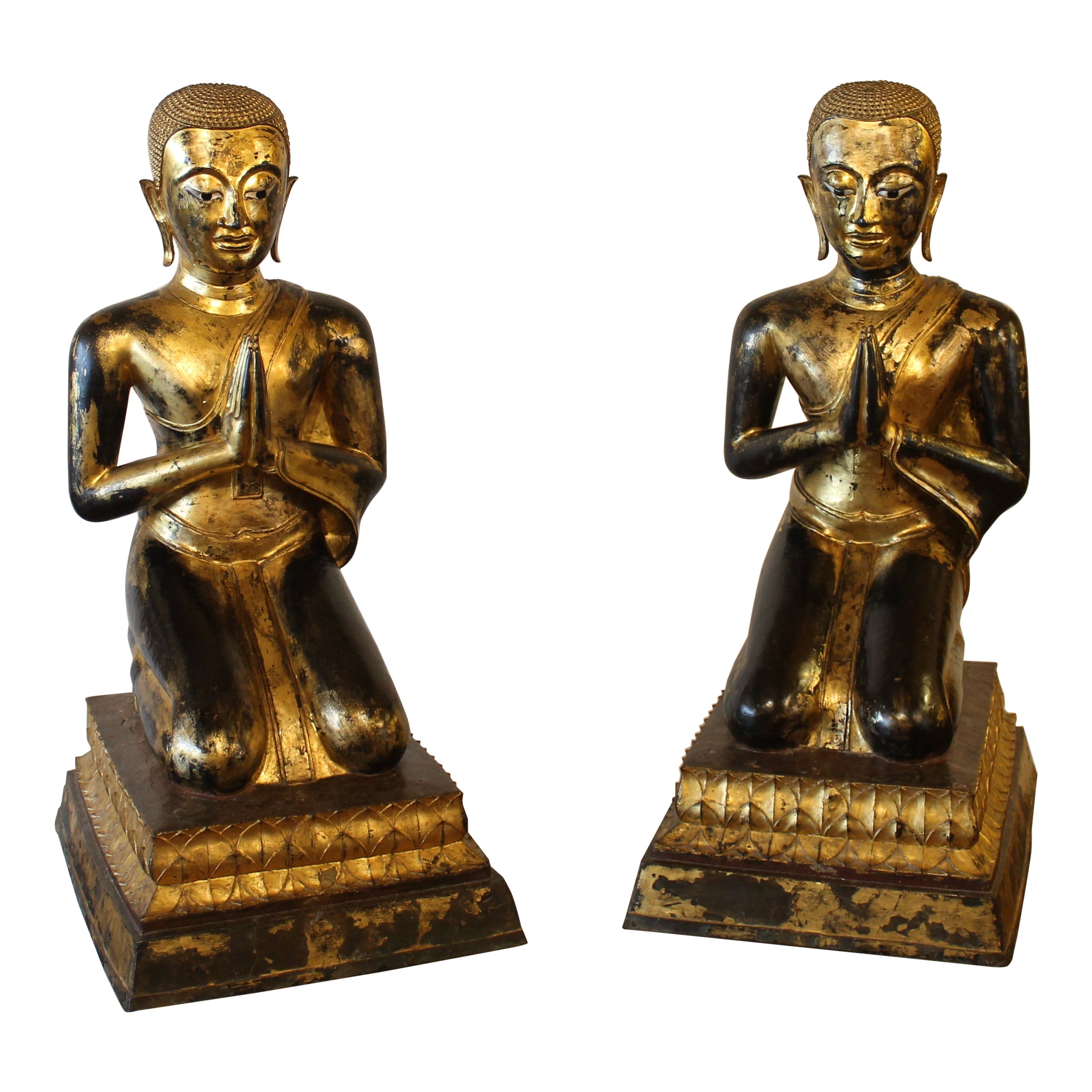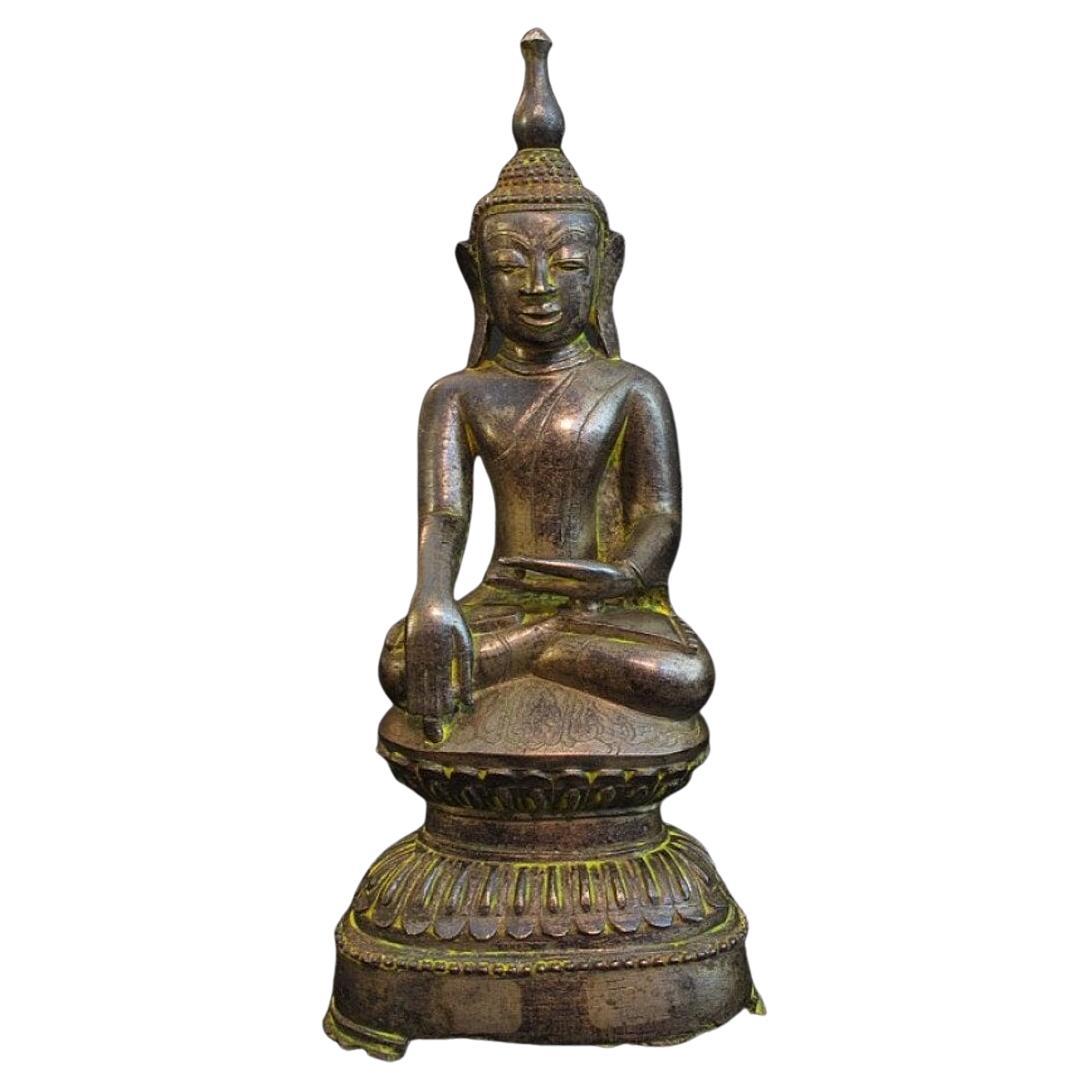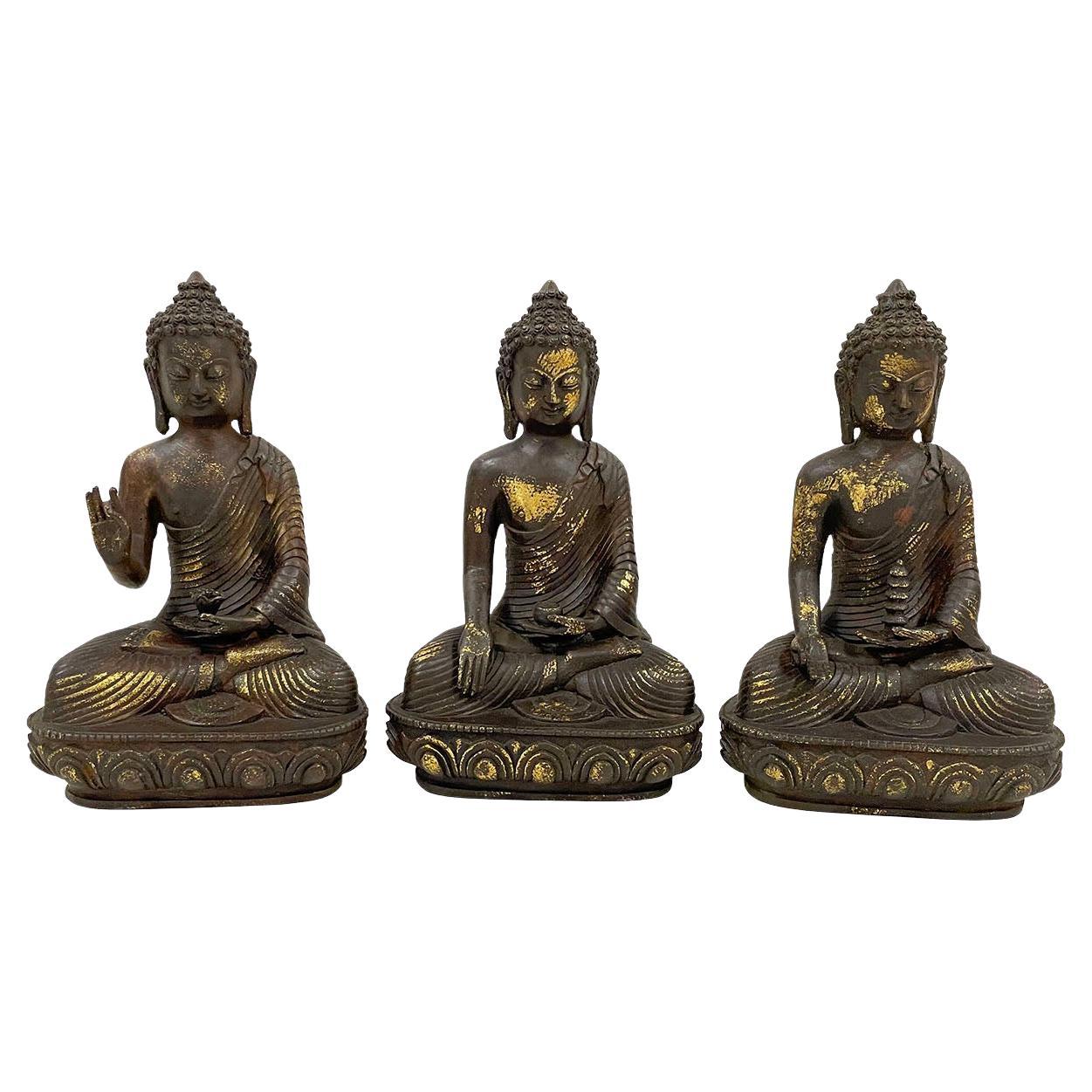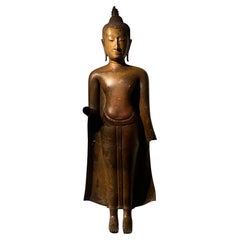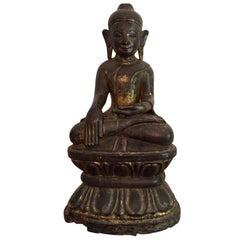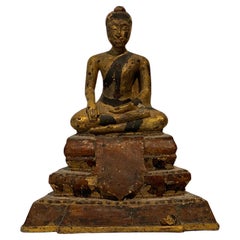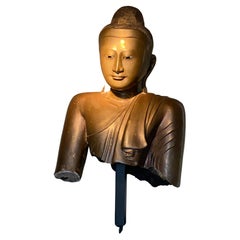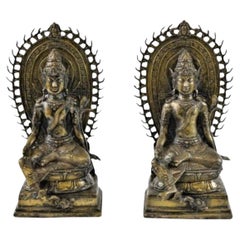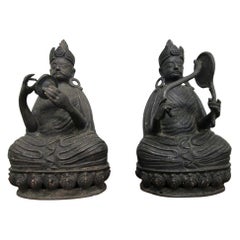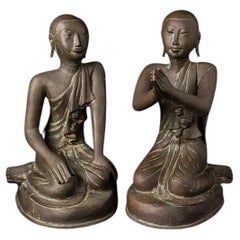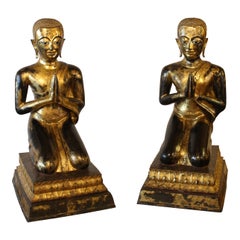Items Similar to Very Exceptional Almost Identical Pair of Bronze Buddhas
Want more images or videos?
Request additional images or videos from the seller
1 of 11
Very Exceptional Almost Identical Pair of Bronze Buddhas
$5,314.70per set
£3,982.37per set
€4,500per set
CA$7,462.43per set
A$8,178.59per set
CHF 4,271.02per set
MX$98,133.68per set
NOK 53,629.91per set
SEK 50,517.39per set
DKK 34,275.58per set
About the Item
Two bronze Buddhas, Ayutthaya, 16th century, Thailand
with great patina
dimensions
26 cm X 13 cm X 8 cm
24 cm X 14 cm X 8 cm.
- Dimensions:Height: 10.24 in (26 cm)Width: 5.12 in (13 cm)Depth: 3.15 in (8 cm)
- Sold As:Set of 2
- Materials and Techniques:Bronze,Polished
- Period:
- Date of Manufacture:16th Century
- Condition:Wear consistent with age and use.
- Seller Location:Schellebelle, BE
- Reference Number:1stDibs: LU195638381673
About the Seller
4.5
Vetted Professional Seller
Every seller passes strict standards for authenticity and reliability
Established in 1997
1stDibs seller since 2016
100 sales on 1stDibs
Typical response time: 11 hours
- ShippingRetrieving quote...Shipping from: Schellebelle, Belgium
- Return Policy
Authenticity Guarantee
In the unlikely event there’s an issue with an item’s authenticity, contact us within 1 year for a full refund. DetailsMoney-Back Guarantee
If your item is not as described, is damaged in transit, or does not arrive, contact us within 7 days for a full refund. Details24-Hour Cancellation
You have a 24-hour grace period in which to reconsider your purchase, with no questions asked.Vetted Professional Sellers
Our world-class sellers must adhere to strict standards for service and quality, maintaining the integrity of our listings.Price-Match Guarantee
If you find that a seller listed the same item for a lower price elsewhere, we’ll match it.Trusted Global Delivery
Our best-in-class carrier network provides specialized shipping options worldwide, including custom delivery.More From This Seller
View AllAntique Bronze Standing Buddha
Located in Schellebelle, BE
An exceptional Bronze standing Buddha from Thailand,
Ayuthaya Period, 15-16 th Century,
great patina and shine of the antique patinated Bronze,
Buddha in Abhaya Mudra pose, sign of p...
Category
Antique 16th Century Thai Sculptures and Carvings
Materials
Bronze
Burmese Wooden Buddha, 18th Century
Located in Schellebelle, BE
Wooden Burmese Buddha with traces of gold lacquer,
18th century,
very good patina and nice, warm, correct color.
Category
Antique 18th Century Burmese More Asian Art, Objects and Furniture
Materials
Wood
Antique South East Asian Sculpture Of Buddha
Located in Schellebelle, BE
Elegant and refined Terracotta sculpture of Buddha,
beautiful patina of the polychromed and gilded terracotta,
seated Buddha with very elegant and refined features,
a good quality of...
Category
Antique 17th Century Southeast Asian Sculptures and Carvings
Materials
Terracotta
Antique Bronze Burmese Head Of Buddha, Mandalay Period
Located in Schellebelle, BE
Elegant Antique Buddha Head, Guilded Bronze, 19th century, Burma,
beautiful head and torso of Buddha, simple strong lines and peaceful expression of t...
Category
Antique 19th Century Burmese More Asian Art, Objects and Furniture
Materials
Bronze
$11,810 Sale Price
20% Off
Set of 2 Bronze Recipients
Located in Schellebelle, BE
Exceptional set of 3 Bronze Recipients with decorations and beautiful green patina, called Thap
Dong Song period, 2000-1000 BC
South East Asia, Vietnam.
Measures: Height 22 cm, di...
Category
Antique 18th Century and Earlier Vietnamese Metalwork
Materials
Bronze
$8,857 / set
Pair of Bronze Bracelets, Southeast Asia
Located in Schellebelle, BE
Nice pair of Bronze Bracelets,Southeast Asia
11-13th Century
Category
Antique 15th Century and Earlier Southeast Asian Metalwork
Materials
Bronze
$1,712 / set
You May Also Like
Pair of Antique Seated Southeast Bronze Buddhas
Located in Newmanstown, PA
Pair of Antique Seated Southeast Bronze Buddhas- H 13" x W 6.5" x L 10"
Category
Antique 19th Century Asian Sculptures and Carvings
Materials
Bronze
Pair of Bronze Buddha Statues
Located in New York, NY
Pair of bronze Buddha statues.
Category
Antique Late 18th Century Asian Sculptures
Materials
Bronze
$4,200 / set
Pair of Antique Bronze Burmese Monk Statues from Burma
Located in DEVENTER, NL
Material: bronze
37 cm high
20 cm wide and 26,5 cm deep
Weight: 19.883 kgs
Mandalay style
Namaskara mudra
Originating from Burma
Late 19th century.
Category
Antique Late 19th Century Burmese Sculptures and Carvings
Materials
Bronze
Pair of Monk in Bronze-18 ° Century-Ayuttheya
Located in Brussels, Brussels
Rare pair of monks from the 18th century-Ayutthaya-Thailand
Superb pair of large lacquered and gilt bronze monks
very beautiful face and expression ...
Category
Antique 18th Century Thai Other Sculptures and Carvings
Materials
Bronze
$20,668 / set
Antique Bronze Buddha from Burma Original Buddhas
Located in DEVENTER, NL
This antique bronze Buddha statue is a truly unique and special collectible piece. Standing at 24 cm high and weighing 0.661 kgs, it is made of b...
Category
Antique 18th Century Burmese Sculptures and Carvings
Materials
Bronze
Early 20 Century Antique Carved Bronze 3 Generations of Buddha Statues
Located in Pomona, CA
Three generations of Buddha represents Past, Present and Future three generations of Buddha. They are Dipamkara Buddha, Sakyamuni Buddha and Maitreya Buddha. They wer hand made from ...
Category
Early 20th Century Chinese Chinese Export Figurative Sculptures
Materials
Bronze
More Ways To Browse
16th Century Bronze
Ayutthaya Buddha
Ayutthaya Bronze
Persian Ewer
Antique Persian Trays
Asian Metal Wall Art
Cloisonne Cabinet
Cloisonne Elephants
Japanese Bronze Samurai
Japanese Censor
Japanese Lion Bronzes Meiji Period
Shang Bronze
Silver Censer
Tibetan Singing Bowl
Bronze Hibachi
China Brazier
Elephant Censer
Foo Censer
